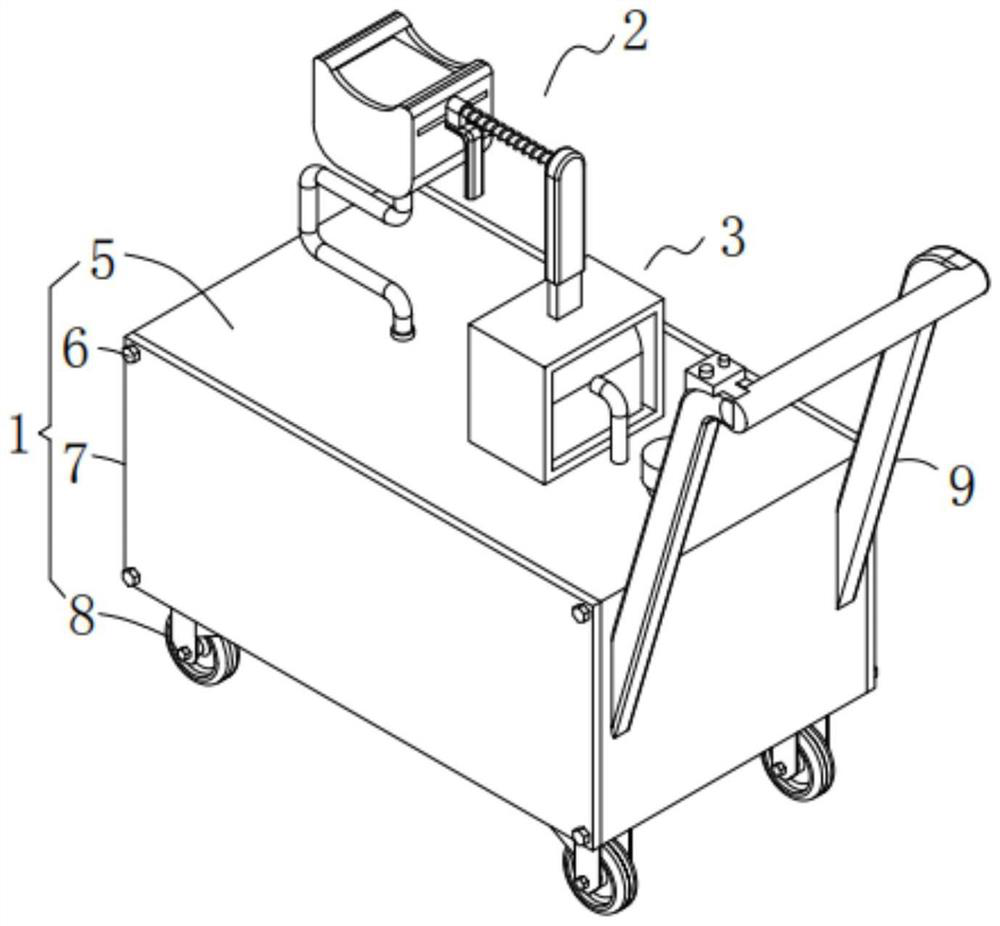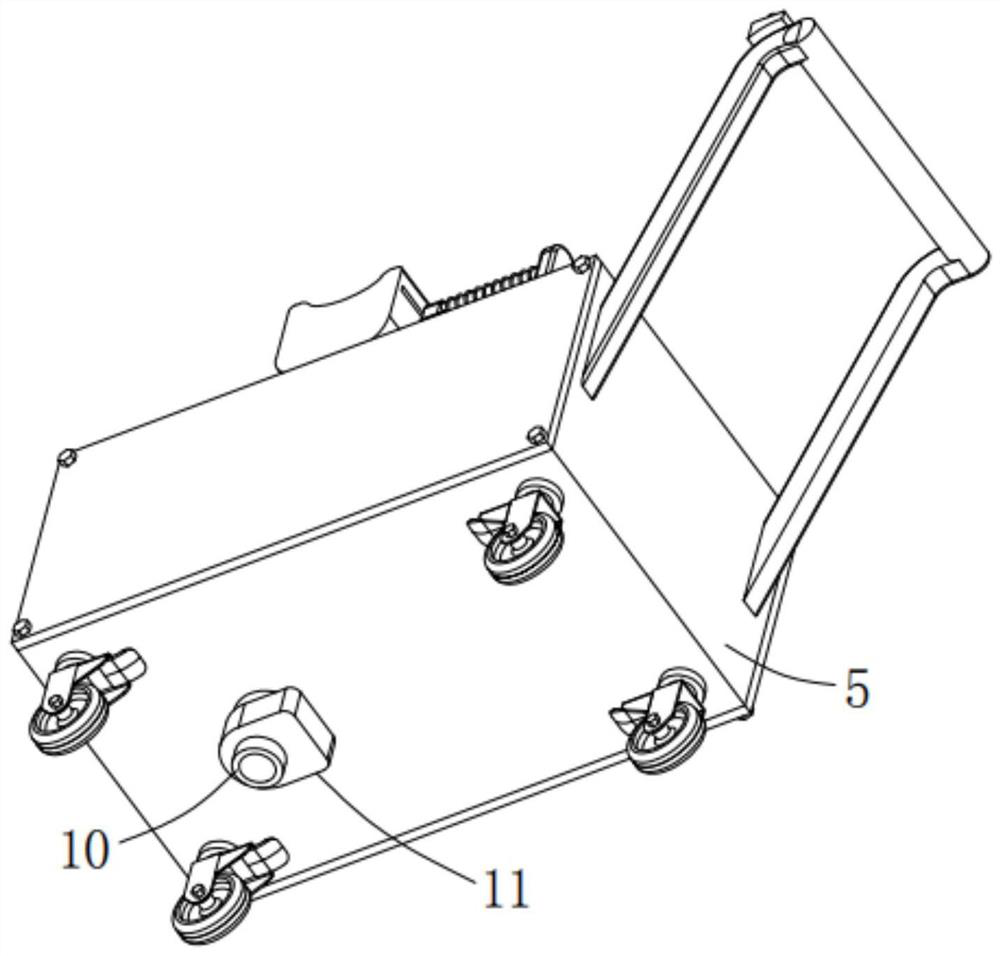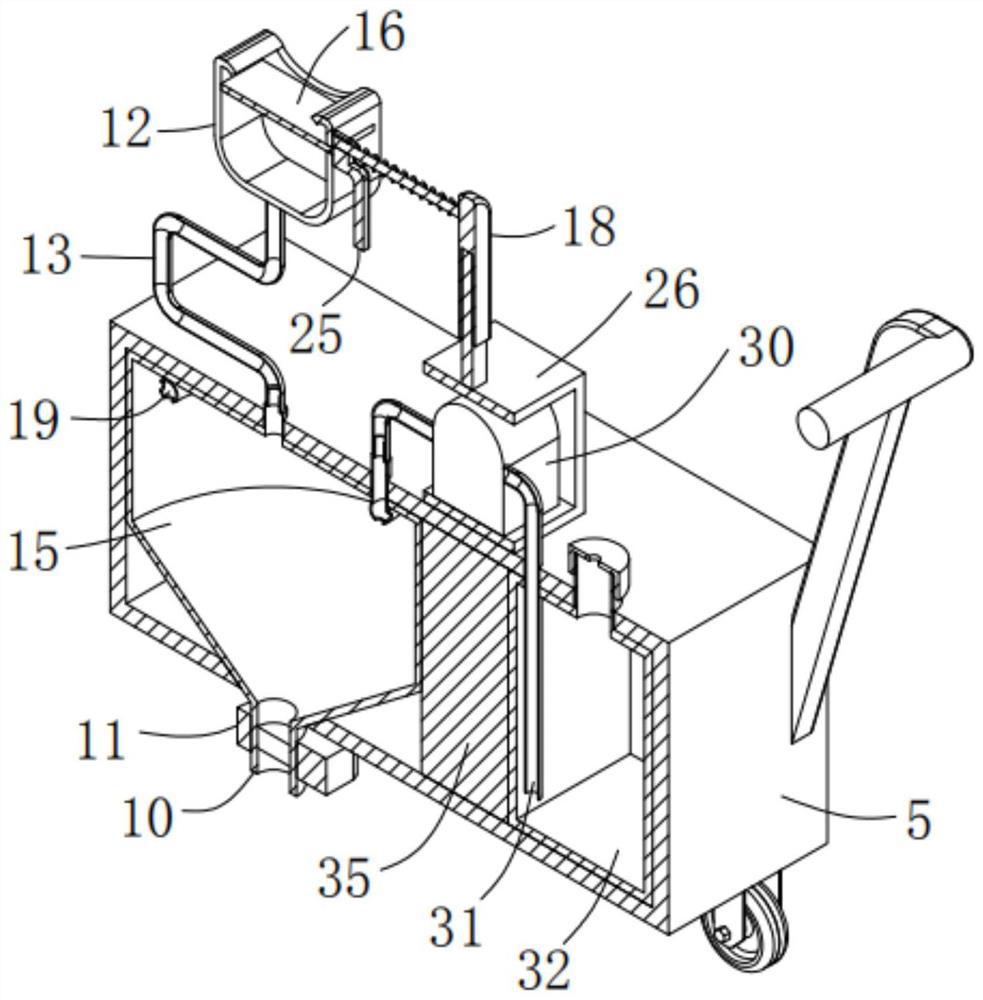A urology nursing device
A nursing device and urology technology, which is applied in the field of medical devices, can solve the problems of a large amount of dirt sticking, difficult to remove urine and water, and increased workload of cleaning staff
- Summary
- Abstract
- Description
- Claims
- Application Information
AI Technical Summary
Problems solved by technology
Method used
Image
Examples
Embodiment 1
[0059] A urological care device, such as figure 1 , 3 As shown in and 8, it includes a frame 1, and also includes a urine receiving unit 2, a placement unit 3 and a cleaning unit 4, and the urine receiving unit 2, the placement unit 3 and the cleaning unit 4 are all installed on the frame 1, the placement unit 3 is arranged in cooperation with the urine receiving unit 2, and the cleaning unit 4 is arranged in cooperation with the urine receiving unit 2.
[0060] By adopting the above-mentioned technical scheme, the frame 1 is used as the installation base of the device, the urine receiving unit 2 is used for receiving urine for inconvenient patients who are hospitalized in the urology department, and the placement unit 3 is used to cooperate with the urine receiving unit 2, cleaning The unit 4 is used for cooperating with the urine receiving unit 2 .
[0061] Preferably, if figure 1 As shown, the frame 1 includes a support platform 5 and two side plates 7, the inside of the...
Embodiment 2
[0081] The difference from Example 1 is that a protective layer is provided on the surface of the support table 5 and the inner and outer surfaces of the urine hopper 12, and the protective layer is prepared by the following method:
[0082] Take the following raw materials and weigh them by weight: 20-30 parts of epoxy resin, 8 parts of calcium carbonate powder, 10 parts of copper oxide powder, 12 parts of nano-silver powder, 12 parts of polytetrafluoroethylene, 10 parts of acrylic emulsion, 4 parts of organic bentonite , 2 parts of alcohol ester twelve parts, 2 parts of triethanolamine, 1 part of emulsified silicone oil and 30 parts of water;
[0083] S1. Add the weighed acrylic emulsion, alcohol ester dodeca, triethanolamine, emulsified silicone oil and water into the mixer and stir for 20min at a stirring speed of 400r / min to prepare a mixed solution;
[0084] S2, adding epoxy resin, calcium carbonate powder, copper oxide powder, nano-silver powder, polytetrafluoroethylene...
Embodiment 3
[0089] The difference with embodiment 2 is the preparation of protective layer, and its specific preparation method is as follows:
[0090] Take the following raw materials and weigh them by weight: 25 parts of epoxy resin, 10 parts of calcium carbonate powder, 11 parts of copper oxide powder, 13 parts of nano-silver powder, 13 parts of polytetrafluoroethylene, 12 parts of acrylic emulsion, 5 parts of organic bentonite, alcohol 3 parts of ester twelve, 3 parts of triethanolamine, 2 parts of emulsified silicone oil and 35 parts of water;
[0091] S1. Add the weighed acrylic emulsion, alcohol ester dodeca, triethanolamine, emulsified silicone oil and water into the mixer and stir for 25min at a stirring speed of 500r / min to prepare a mixed solution;
[0092] S2, adding epoxy resin, calcium carbonate powder, copper oxide powder, nano-silver powder, polytetrafluoroethylene and organic bentonite into a pulverizer and pulverizing until the particle diameter of the material is not gr...
PUM
 Login to View More
Login to View More Abstract
Description
Claims
Application Information
 Login to View More
Login to View More - R&D
- Intellectual Property
- Life Sciences
- Materials
- Tech Scout
- Unparalleled Data Quality
- Higher Quality Content
- 60% Fewer Hallucinations
Browse by: Latest US Patents, China's latest patents, Technical Efficacy Thesaurus, Application Domain, Technology Topic, Popular Technical Reports.
© 2025 PatSnap. All rights reserved.Legal|Privacy policy|Modern Slavery Act Transparency Statement|Sitemap|About US| Contact US: help@patsnap.com



